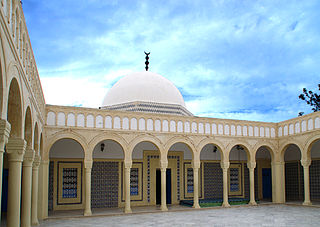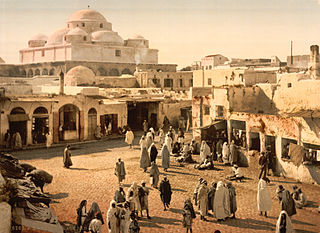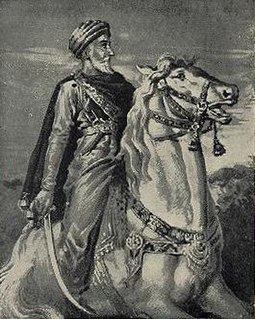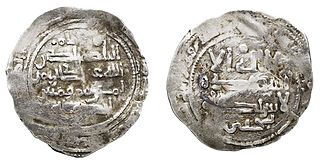 W
WAbu ʿAmr ʿAbbad II al-Muʿtadid, a member of the Abbadid dynasty, was the second independent emir of Seville in Al-Andalus. His father, Abu al-Qasim Muhammad ibn Abbad, had established the taifa of Seville, and Abbad became its emir when Abu al-Qasim died in 1042. He initially had amicable relations with his neighbour Ferdinand I, Count of Castile and King of León, and tolerated the Christian faith in his own lands. Among other acts of friendship, he authorized the transfer of Saint Isidore's relics from Seville to the Basilica of San Isidoro of León.
 W
WMoulai Abdullah was the first Ismaili, Fatimid, mustaali saint who came to Cambay (Khambat), Gujarat in India in about 1067 AD (460AH) from Haraz Mountains, Yemen. Syedi Nuruddin was his companion who also visited Imam Al-Mustansir Billah, Egypt. He joined the Ismaili faith under Fatimid Dai Mu'ayyad fi'l-Din al-Shirazi, and came back to Khambat, India to propagate the Taiyabi faith. His earlier name was Balam Nath.
 W
WAbū l-Ḥasan 'Alī ibn Abī l-Rijāl al-Shaybani was an Arab astrologer of the late 10th and early 11th century, best known for his Kitāb al-bāri' fī aḥkām an-nujūm. He was a court astrologer to the Tunisian prince al-Mu'izz ibn Bâdis in the first half of the 11th century. Haly died after 1037 in Kairouan in what is now Tunisia.
 W
WAbu Zayd Ibn Rizq Al-Hilali listen (help·info) was an 11th-century Arab leader and hero of the 'Amirid tribe of Banu Hilal.
 W
WAli ibn Muhammad Al-Qayrawani Al-Rab'i Al-Lakhmi, also known as Imam al-Lakhmi, was a famous jurist in the Maliki school of Sunni Islamic Law. His nisba indicates that he is from the Arab tribes of Banu Lakhm. He was one of the most important figures in the school and his opinions are still well known and respected to this day. Al-Lakhmi was one of four jurists whose positions were held as authoritative by Khalil ibn Ishaq in his Mukhtassar.
 W
WMuhammad ibn Ali ibn Omar ibn Muhammad al-Tamimi al-Maziri, simply known as Al-Maziri or as Imam al-Maziri and Imam al-Mazari, was an important Arab Muslim jurist in the Maliki school of Sunni Islamic Law. He was one of the most important figures in the school and his opinions are well known and respected to this day. Al-Maziri was one of four jurists whose positions were held as authoritative by Khalil ibn Ishaq in his Mukhtassar, which is the most important of the later texts in the relied upon positions of the school. It is for this reason that he is referred to simply as al-Imam within the Maliki school.
 W
WʿAlī ibn ʿĪsā al-Kahhal, surnamed "the oculist" (al-kahhal) was the best known and most celebrated Arab ophthalmologist of medieval Islam. He was known in medieval Europe as Jesu Occulist.
 W
WAbu'l Hassan Ali ibn Ridwan Al-Misri was an Arab of Egyptian origin who was a physician, astrologer and astronomer, born in Giza.
 W
WAbu ʿĀmir Muḥammad ibn ʿAbdullāh ibn Abi ʿĀmir al-Maʿafiri, nicknamed al-Manṣūr, usually simply called Almanzor, was an Andalusian military leader and statesman. As the chancellor of the Umayyad Caliphate of Córdoba and hajib (chamberlain) for the weak Caliph Hisham II, Almanzor was the de facto ruler of Islamic Iberia.
 W
WArwa Al-Sulayhi, full name Arwā bint Aḥmad ibn Muḥammad ibn Jaʿfar ibn Mūsā Aṣ-Ṣulayḥī was a long-reigning ruler of Yemen, firstly as the co-ruler of her first two husbands and then as sole ruler, from 1067 until her death in 1138. She was the last of the rulers of the Sulayhid Dynasty and was also the first woman to be accorded the prestigious title of Hujjah in the Isma'ili branch of Shia Islam, signifying her as the closest living image of God's will in her lifetime, in the Ismaili doctrine. She is popularly referred to as As-Sayyidah Al-Ḥurrah, Al-Malikah Al-Ḥurrah (Arabic: ٱلْمَلِكَة ٱلْحُرَّة or Al-Ḥurratul-Malikah, and Malikat Sabaʾ Aṣ-Ṣaghīrah. She is known by the name Arwa. However, this name does not have any historical source and all historical sources name her "Sayyidah bint Ahmed".
 W
WAsma Bint Shihab al-Sulayhiyya was the queen and co-ruler of Yemen in co-regency with her cousin and spouse, Ali al-Sulayhi, and later her son Ahmad al-Mukkaram, and daughter-in-law, Arwa al-Sulayhi, from 1047 until 1087. Her full title as sovereign, "al-Sayyida al-Hurrat-ul" translates to "The noble lady who is free and independent, the woman sovereign who bows to no superior authority". As female sovereign, Asma bint Shihab has an almost unique position in history: though there were more female monarchs in the international Muslim world, Asma bint Shihab and Arwa al-Sulayhi were the only female monarchs in the Muslim Arab world to have had the khutba proclaimed in their name in the mosques as sovereigns.
 W
WIbn Ḥamdīs al-ʾAzdī al-Ṣīqillī was a Sicilian Arab poet.
 W
WIbn al-Bawwāb, also known as Ali ibn-Hilal, Abu'l-Hasan, and Ibn al-Sitri, was an Arabic calligrapher and illuminator who lived during the time of the Buyid dynasty. He is the figure most associated with the adoption of round script to transcribe the Qur'an. He most likely died around 1022 CE in Baghdad.
 W
WḤasan Ibn al-Haytham was an Arab mathematician, astronomer, and physicist of the Islamic Golden Age. Referred to as "the father of modern optics", he made significant contributions to the principles of optics and visual perception in particular. His most influential work is titled Kitāb al-Manāẓir, written during 1011–1021, which survived in a Latin edition. A polymath, he also wrote on philosophy, theology and medicine.
 W
WIbn Butlan was an Arab Nestorian Christian physician who was active in Baghdad during the Islamic Golden Age.
 W
WAbu Abd Allah Muhammad ibn al-Husayn Ibn al-Kattani al-Madhiji (951–1029), sometimes nicknamed "al-Mutatabbib", was a well-known Arab scholar, philosopher, physician, astrologer, man of letters, and poet.
 W
WAbū Marwān ‘Abd al-Malik ibn Zuhr, traditionally known by his Latinized name Avenzoar, was an Arab physician, surgeon, and poet. He was born at Seville in medieval Andalusia, was a contemporary of Averroes and Ibn Tufail, and was the most well-regarded physician of his era. He was particularly known for his emphasis on a more rational, empiric basis of medicine. His major work, Al-Taysīr fil-Mudāwāt wal-Tadbīr, was translated into Latin and Hebrew and was influential to the progress of surgery. He also improved surgical and medical knowledge by keying out several diseases and their treatments.
 W
WAbū Bakr Muḥammad ibn al-Ḥasan al-Murādī al-Ḥaḍramī or el Mûradi Al Hadrami or al-shaykh al imâm Al Hadrami was an 11th century North African Islamic theologian and jurist. He died in 1095.
 W
WAbū al-ʿAlāʾ al-Maʿarrī was a blind Arab philosopher, poet, and writer. Despite holding a controversially irreligious worldview, he is regarded as one of the greatest classical Arabic poets.
 W
WSidi Mahrez ben Khalaf or Abu Mohamed Mahrez ben Khalaf ben Zayn was a Tunisian Wali, scholar of the Maliki school of jurisprudence and a Qadi. He is considered to be the patron-saint of the city of Tunis.
 W
WAl-Mansur al-Qasim al-Iyyani was an imam of the Zaidi state in Yemen who briefly reestablished a comprehensive Zaidi realm in the years 999–1002.
 W
Wal-Mu'tamid Muhammad ibn Abbad Ibn Ismail al-Lakhmi was the third and last ruler of the taifa of Seville in Al-Andalus. He was a member of the Abbadid dynasty.
 W
WAbu al-Wafa' al-Mubashshir ibn Fatik was an Arab philosopher and scholar well versed in the mathematical sciences and also wrote on logic and medicine. He was born in Damascus but lived mainly in Egypt during the 11th century Fatimid Caliphate. He also wrote an historical chronicle of the reign of al-Mustansir Billah. However, the book he is famed for and the only one extant, Kitāb mukhtār al-ḥikam wa-maḥāsin al-kalim, the "Selected Maxims and Aphorisms", is a collection of sayings attributed to the ancient sages translated into Arabic. The date of composition given by the author is 1048–1049.
 W
WAbu Bakr Muhammad Ibn ‘Abd al-Bāqī al-Baghdadi al-Ansārī al-Kaabī (1050-1141) also known as Qadi al-Maristan, was an Arab jurist and mathematician.
 W
WAbu Kamil Nasr ibn Salih ibn Mirdas, also known by his laqab of Shibl al-Dawla, was the second Mirdasid emir of Aleppo, ruling between 1029/30 until his death. He was the eldest son of Salih ibn Mirdas, founder of the Mirdasid dynasty. Nasr fought alongside his father in the battle of al-Uqhuwanah near Tiberias, where Salih was killed by a Fatimid army led by Anushtakin al-Dizbari. Afterward, Nasr ruled the emirate jointly with his brother Thimal. The young emirs soon faced a large scale Byzantine offensive led by Emperor Romanos III. Commanding a much smaller force of Bedouin horsemen, Nasr routed the Byzantines at the Battle of Azaz.
 W
WAbū Manṣūr Nizār ibn al-Mustanṣir was a Fatimid prince, and the oldest son of the eighth Fatimid caliph and Isma'ili imam, al-Mustansir. When his father died in December 1094, the military strongman, al-Afdal Shahanshah, raised Nizar's younger brother al-Musta'li to the throne in Cairo, bypassing the claims of Nizar and other older sons of al-Mustansir. Nizar escaped Cairo, rebelled and seized Alexandria, where he reigned as caliph with the regnal name al-Muṣṭafā li-Dīn Allāh. In late 1095 he was defeated and taken prisoner to Cairo, where he was killed by immurement. Many Isma'ilis, especially in Persia, who rejected al-Musta'li's imamate and considered Nizar as the rightful imam, split off from the Fatimid regime and founded the Nizari branch of Isma'ilism, with their own line of imams who claimed descent from Nizar that continues to this day. Later during the 12th century some of Nizar's actual or claimed descendants tried, without success, to seize the throne from the Fatimid caliphs.
 W
WAl-Qadir was the Abbasid Caliph in Baghdad from 991 to 1031. He was the grandson of al-Muqtadir, he was chosen in place of the deposed Caliph, at-Ta'i, his cousin. Banished from the capital, Baghdad, earlier, he was now recalled and appointed to the office he had long desired.
 W
WHassan-i Sabbāh or Hassan as-Sabbāh was the founder of the Nizari Isma'ili state and its fidā'i military group known as the Order of Assassins, often referred also as the Hashshashin. Since Marco Polo he has been known in the West as the Old Man of the Mountain. As a missionary, he converted the people of the Alborz Mountains of northern Iran to Nizari Isma'ilism in the late 11th century. He later seized a mountain fortress called Alamut.
 W
WAbu Ali Salih ibn Mirdas, also known by his laqab Asad al-Dawla, was the founder of the Mirdasid dynasty and emir of Aleppo from 1025 until his death in May 1029. At its peak, his emirate (principality) encompassed much of the western Jazira, northern Syria and several central Syrian towns. With occasional interruption, Salih's descendants ruled Aleppo for the next five decades.
 W
WAbū Manṣūr al-Thaʿālibī, Abd al-Mālik ibn Muḥammad ibn Ismā’īl, (961–1038), was a writer of Persian or Arab ethnicity, native of Nishapur, Persia, famous for his anthologies and collections of epigrams. As a writer of prose and verse in his own right, distinction between his and the work of others is sometimes lacking, as was the practice of writers of the time.
 W
WYahya ibn Ali ibn Hammud al-Mu'tali was Caliph of Cordoba in the Hammudid dynasty of the Al-Andalus during two periods, from 1021 to 1023 and from 1025 to 1026. He was the son of caliph Ali ibn Hammud, of Berber-Arab origins.
 W
WAbu al-Hasan 'Ali ibn 'Abd al-Rahman ibn Ahmad ibn Yunus al-Sadafi al-Misri was an important Egyptian Muslim and mathematician, whose works are noted for being ahead of their time, having been based on meticulous calculations and attention to detail.
 W
WAbū al-Qāsim Khalaf ibn al-'Abbās al-Zahrāwī al-Ansari, popularly known as Al-Zahrawi (الزهراوي), Latinised as Abulcasis, was an Arab Andalusian physician, surgeon and chemist. Considered to be the greatest surgeon of the Middle Ages, he has been described as the father of surgery.
 W
WAbū Isḥāq Ibrāhīm ibn Yaḥyā al-Naqqāsh al-Zarqālī al-Tujibi ; also known as Al-Zarkali or Ibn Zarqala (1029–1087), was an Arab Muslim instrument maker, astrologer, and the most important astronomer from the western part of the Islamic world.